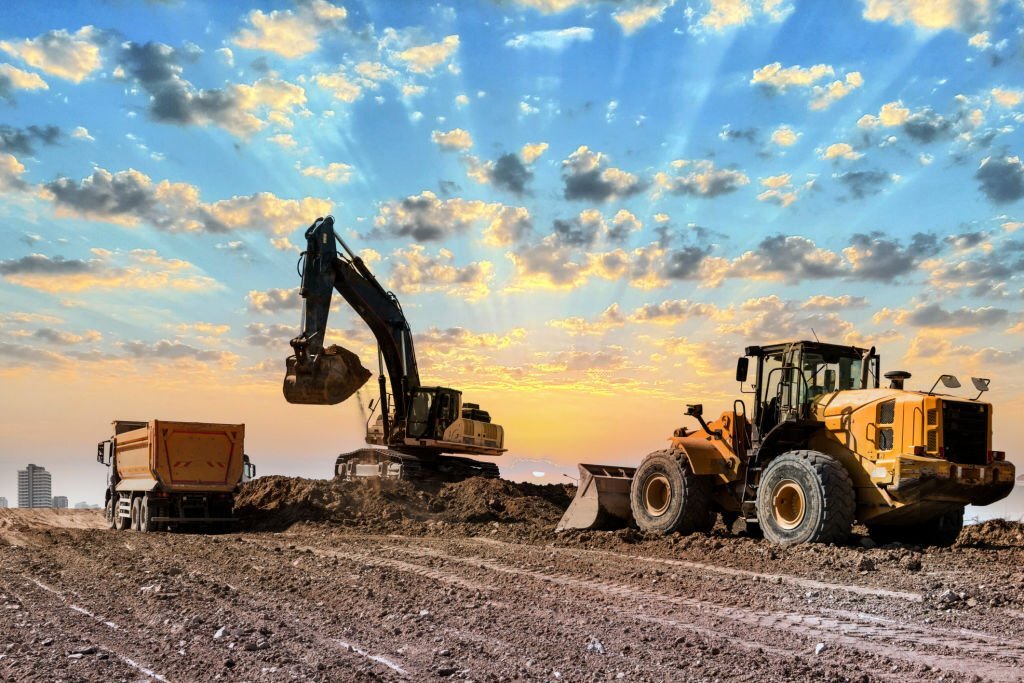Introduction

Pile drivers, those mighty machines that shape the foundations of our built environment, are hailed for their efficiency, stability, and adaptability. However, even the most potent tools have their limitations, and pile drivers are no exception. As pivotal as they are in heavy equipment applications, these machines come with their own set of challenges that demand attention, strategy, and mitigation. In this article, we embark on a journey to understand the potential disadvantages and limitations associated with pile drivers in the context of construction projects and explore how these challenges can be addressed to ensure safe and efficient construction endeavors.
1. Environmental Impact

While pile drivers play a crucial role in construction, their operations can introduce environmental challenges. The percussive force of impact hammers, for instance, can generate noise pollution that disrupts surrounding communities. Vibratory pile drivers, while quieter, can still emit vibrations that may affect nearby structures and sensitive environments. Additionally, hydraulic systems used in pile drivers require hydraulic fluid, which raises concerns about fluid leaks and environmental contamination.
Mitigating Environmental Impact: Balancing Progress and Responsibility
Navigating the dynamic landscape of construction involves more than erecting structures; it entails a harmonious coexistence with the environment. When pile drivers enter the scene, their potential for noise pollution and vibrations can disrupt the tranquility of communities and ecosystems. To address this environmental impact, construction projects embracing pile drivers must proactively weave a tapestry of mitigation strategies.
Creating Noise Barriers: The symphony of construction need not be discordant. Incorporating noise barriers—physical structures that absorb or reflect sound—around the pile driver can create a shield against noise propagation. These barriers serve as a buffer between the construction site and the surrounding area, muffling the cacophony of percussive forces and resonating impacts.
Embracing Vibration-Dampening Technologies: Vibrations are the ripple effects of construction activities that can reverberate far beyond the site. Leveraging vibration-dampening technologies, such as shock-absorbing materials and isolating systems, can mitigate the transmission of vibrations. By dampening the intensity of vibrations, pile driver operations can become more neighborly affairs, devoid of disturbances.
Implementing Effective Waste Management: The residues of progress often manifest as waste, but responsible construction practices extend to waste management. By implementing efficient waste management systems, construction sites can curtail the environmental footprint left behind by pile driver operations. Proper disposal and recycling of materials and fluids further underline the commitment to harmony between construction and nature.
A Commitment to Responsible Practices: The measure of a construction project’s impact transcends the physical structures it erects; it encompasses its interaction with the environment. The incorporation of noise barriers, vibration-dampening technologies, and effective waste management systems speaks volumes about a project’s commitment to responsible construction practices. It isn’t just about mitigating disruptions; it’s about weaving an intricate tapestry where progress harmonizes with environmental stewardship. Through these measures, pile drivers transform from agents of disruption to symbols of sustainable progress, leaving a legacy of conscientious construction for generations to come.
2. Soil and Ground Conditions

Navigating Nature’s Terrain: Pile Drivers and the Ground Beneath
The synergy between pile drivers and the ground they interact with is a delicate dance influenced by the earth’s diverse moods. The effectiveness of these machines pivots on the canvas of soil and ground conditions that greet them at each construction site. Nature, with its geological brushstrokes, sometimes sketches rocky terrains, layers of unyielding bedrock, or soils so soft they seem to embrace the piles. Yet, within these diverse landscapes, challenges and opportunities emerge.
The Rocky Terrain Conundrum: When rocky terrains play a central role, pile installation can be akin to an intricate puzzle. The robustness of rocks can resist the conventional methods of pile drivers, necessitating specialized approaches that involve drilling, fracturing, or using different types of piles. The encounter between the pile driver’s force and the rocky resolve beneath necessitates a thoughtful choreography of technique and tenacity.
The Bedrock Conundrum: Beneath layers of soil, the steadfast bedrock rests—a formidable adversary for pile drivers. The density and unyielding nature of bedrock demand a distinct level of force and technique, challenging the very essence of pile penetration. In these conditions, achieving the desired pile depth and load-bearing capacity may call for a calculated escalation of effort and time.
The Soft Soil Enigma: On the flip side, excessively soft soils can lead to a different set of dilemmas. Pile drivers must tread cautiously, balancing the need for penetration with the risk of instability. The ground’s gentle embrace might yield more easily to pile insertion, but the challenge lies in achieving the requisite stability and load-bearing capacity within these soft, yielding arms.
Transforming Challenges into Triumphs: Within these challenges lies the canvas upon which the artistry of construction unfolds. Pile drivers, with their ability to adapt to varied terrains, work in collaboration with engineers and site specialists to tailor techniques that overcome these geological hurdles. When confronted with rocky terrains, drill rigs might be summoned; for bedrock, powerful impact hammers with strategic angles might prove triumphant. The soft embrace of soil might demand unique pile designs to maximize stability.
The diversity of soil and ground conditions is a testament to the complexity of our planet. Pile drivers, as both protagonists and artists, embrace this complexity with a spirit of adaptability. They transform challenges into triumphs, working in tandem with the earth’s moods to lay the foundations for our built world. From rocky resistance to bedrock battles and soft soil enigmas, pile drivers remain steadfast, embodying the construction industry’s ability to navigate nature’s terrain and craft stability from the ground up.
3. Equipment Size and Accessibility

Sizing Up the Challenge: Pile Drivers and the Dance of Dimensions
In the symphony of construction, where precision meets progress, the size of the conductor—the pile driver—can wield profound influence. Pile drivers, like instruments in an orchestra, come in various sizes, from the nimble cadenzas that navigate urban landscapes to the grand crescendos that shape heavy-duty applications. Yet, the realm of dimensions isn’t without its complexities, and challenges often emerge when orchestration meets accessibility.
The Overture of Versatility: The beauty of pile drivers lies in their adaptability, akin to an ensemble that harmonizes with diverse settings. Compact pile drivers, tailored for urban environments, adeptly navigate the tight and intricate alleys of cityscapes, embodying precision and restraint. On the other end of the spectrum, the grandeur of larger pile drivers commands attention in heavy-duty applications, where the weight of the undertaking demands a resonating presence.
The Choreography of Urban Constraints: Amid the urban dance, where space is a coveted resource, pile drivers must pirouette through challenges posed by confined construction sites. The very attributes that make larger machines mighty—power, reach, and capacity—can also render them unwieldy in spaces hemmed in by concrete confines. The intricacies of maneuverability demand a choreography that mitigates the risk of congestion and ensures the safety of both the construction team and the surroundings.
Tackling Challenges with Precision: In urban settings, compact pile drivers step onto the stage as protagonists, embracing challenges with finesse. Their ability to navigate restricted spaces and execute pile installation with precision offers a delicate balance between construction progress and the urban canvas. When larger pile drivers take center stage in heavy-duty applications, meticulous planning becomes the overture. Accessibility must be strategized, ensuring that the symphony of construction unfolds seamlessly even in the grandest orchestrations.
4. Structural Integrity Concerns
While pile drivers enhance the stability and structural integrity of constructions, their operations can inadvertently impact nearby structures. The vibrations or percussive force generated during pile installation can potentially damage neighboring buildings, utilities, or underground structures.
Mitigation Strategy: Employing technologies such as vibration monitoring devices and implementing appropriate exclusion zones can help mitigate the risks of structural damage. Close coordination with neighboring property owners and local authorities is essential to ensure construction activities do not compromise the safety of surrounding structures.
Health and Safety
The operation of pile drivers introduces safety risks to the construction site. Noise exposure, especially for operators, can lead to hearing damage if proper precautions are not taken. Additionally, the powerful machinery involved in pile driver operations demands strict adherence to safety protocols to prevent accidents.
Mitigation Strategy: Providing operators with personal protective equipment (PPE), such as noise-canceling ear protection and safety gear, is essential to safeguard their health. Comprehensive training programs, coupled with strict adherence to safety guidelines, can minimize the risk of accidents and ensure the well-being of the construction team.
Conclusion
Pile drivers, as invaluable tools in heavy equipment applications, offer a multitude of advantages in constructing stable and enduring foundations. However, these advantages are accompanied by potential disadvantages and limitations that demand thoughtful consideration and strategic planning. By acknowledging the challenges posed by environmental impact, soil conditions, equipment size, structural integrity concerns, and health and safety risks, construction projects can adopt mitigation strategies that enable them to harness the power of pile drivers while ensuring safe, efficient, and responsible construction practices.

